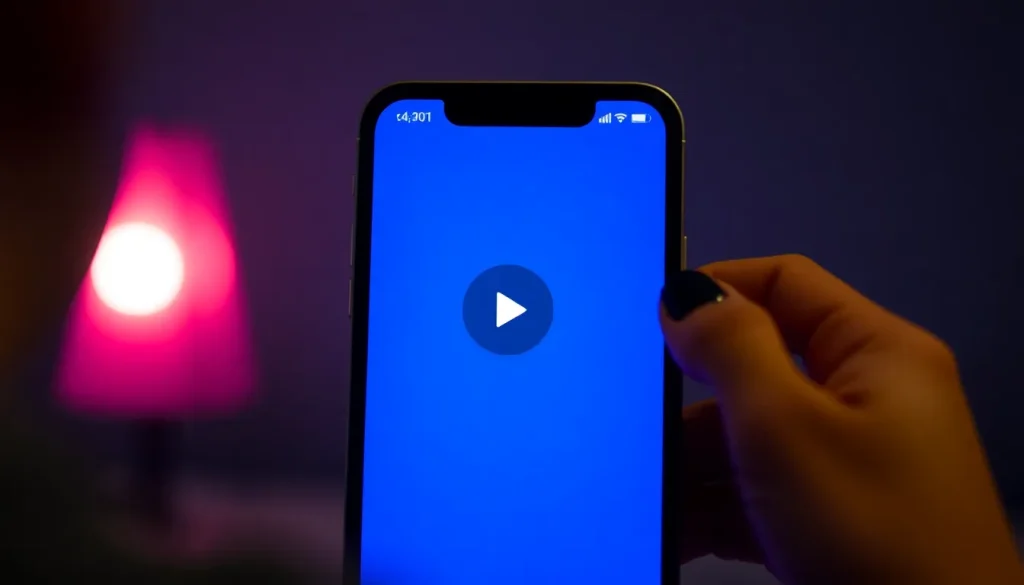Facebook video is essential for media organizations

In an era dominated by digital media, the role of video content on social networks, particularly Facebook, has become increasingly crucial for communication. As traditional news outlets adapt to the changing landscape, understanding the dynamics of video as a medium is essential for crafting effective narratives and engaging audiences.
This article delves into how videos are reshaping the way information is disseminated on platforms like Facebook, exploring the strategies employed by media organizations and the impact of these visual communications.
Videos have emerged as a dominant form of content across social media platforms, attracting millions of viewers daily. According to reports, Facebook alone shows around 1 billion videos daily, illustrating the vast reach and potential of this medium.
As audiences increasingly prefer video over text, media organizations have embraced this trend to enhance engagement. The impact of video can be categorized into several key areas:
- Increased Engagement: Videos typically generate more likes, shares, and comments compared to text or static images.
- Enhanced Storytelling: The visual nature of video allows for deeper emotional connections, making stories more compelling.
- Wider Reach: Videos are more likely to be shared, broadening the audience base significantly.
- Real-Time Reporting: Live videos enable immediate coverage of events, providing viewers with up-to-date information.
The shift towards video content is not merely a trend but a fundamental change in how audiences consume information. As such, the strategies that media organizations adopt in creating video content will determine their success in capturing and retaining viewers’ attention.
What type of communication is a video?
Videos are a multifaceted communication tool that combines visual imagery, audio, and narrative structure to convey messages effectively. They can serve various purposes, including:
- Informative: Delivering news or educational content to the audience.
- Emotional: Eliciting feelings that resonate with viewers, often seen in storytelling formats.
- Entertaining: Engaging the audience through humor or compelling narratives, often used in marketing.
- Persuasive: Aiming to influence opinions or behaviors, common in advocacy and promotional videos.
This versatility makes video a potent medium, capable of transcending language barriers and reaching diverse audiences across the globe. The ability to craft a narrative through a combination of visuals and sound is what sets video apart from other forms of communication.
What benefits does Facebook offer for media communication?
Facebook has transformed into a powerful platform for media communication, offering numerous benefits that enhance how news organizations interact with their audiences. Some of the advantages include:
- Accessibility: Facebook’s wide user base allows media outlets to reach millions instantly.
- Engagement Tools: Features like comments, reactions, and shares facilitate interaction between media and audiences.
- Data Analytics: Advanced analytics provide insights into audience behavior, enabling tailored content strategies.
- Cross-Promotion: Media can leverage Facebook to promote content across different platforms, increasing visibility.
These features position Facebook as an indispensable tool for media organizations aiming to connect with users in meaningful ways. By utilizing the platform's capabilities effectively, news outlets can enhance their outreach and engagement strategies.
Is Facebook a medium of communication?
Facebook operates as a hybrid platform, functioning both as a social network and a medium of communication. It allows users to share, comment, and engage with content, creating a dynamic communication environment. This dual role presents both opportunities and challenges for media organizations.
Key characteristics that define Facebook as a communication medium include:
- Interactive Features: Users can comment on posts, share content, and react, fostering a two-way communication channel.
- Diverse Content Formats: Facebook supports various content types, including text, images, and videos, catering to different audience preferences.
- Community Building: Groups and pages enable users to connect over shared interests, enhancing engagement and loyalty.
- Algorithm-Driven Visibility: Content visibility is influenced by user interactions, which can amplify or limit reach based on engagement levels.
As a communication medium, Facebook challenges traditional notions of information dissemination, requiring media organizations to adapt their strategies to navigate its unique landscape effectively.
The evolving role of video in media strategy
As video content becomes increasingly integral to media strategy, organizations are exploring innovative approaches to leverage this format. For instance, Carmela Ríos from El Mundo emphasizes the importance of quality storytelling in video production. “The video is the essential language for communicating on social networks,” she states, highlighting the need for media professionals to adapt to audience preferences.
Similarly, PlayGround has taken significant steps to innovate its video content, developing formats that resonate with viewers. In 2015, the publication introduced the news video format, which has since evolved into a successful model for engaging audiences. Josune Imízcoz, Head of Editorial Video at PlayGround, notes that their approach to video is influenced by both technological advancements and a commitment to storytelling.
Both organizations recognize the need to continuously refine their video strategies. Some successful tactics include:
- Short and Snappy Content: Keeping videos concise helps retain viewer attention.
- Visual Storytelling: Using strong visuals to convey messages quickly and effectively.
- Real-Time Relevance: Creating content that aligns with current events or trending topics.
The adaptability of video content in media strategies highlights the importance of understanding audience behaviors and preferences in a rapidly changing digital landscape.
Challenges and considerations in video production
While the potential of video content on platforms like Facebook is vast, media organizations face several challenges in its production and dissemination. Ríos points out that identifying which videos will resonate with the audience can be difficult. Factors to consider include:
- Storytelling Quality: Videos that tell a compelling story tend to perform better.
- Accessibility: Including captions ensures content is understood without sound, catering to a wider audience.
- First Impressions: The first few seconds of a video are crucial in capturing viewer interest.
Moreover, Imízcoz emphasizes the importance of creating unique, high-quality content that stands out in a crowded marketplace. “There is no magic formula,” she explains, underscoring the need for continuous experimentation and creativity.
As media organizations navigate the complexities of video production, they must remain flexible and innovative to thrive in this competitive digital environment. The evolution of video content in social media represents not only a shift in consumption habits but also an opportunity to redefine how stories are told and shared.
For those interested in further exploring the impact of technology on media communication, here's an insightful video that discusses the changes in media landscapes and the role of innovative formats:




Leave a Reply